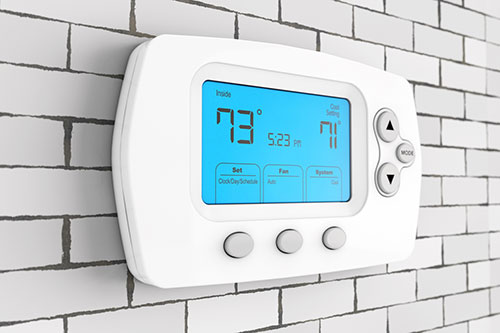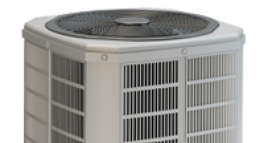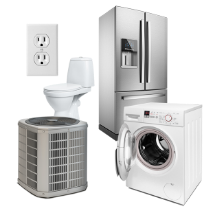Manual thermostats, programmable thermostats, smart thermostats…when it comes to controlling your home’s climate, there have never been more options. If you aren’t sure which type of thermostat to buy, this guide will help you decide. It is important to take into account your family and your climate and base your thermostat choice on those factors.
Manual Thermostats
If you want straightforward operation, a manual thermostat is a good option. With simple on/off controls, manual thermostats can operate efficiently, provided you remember to adjust the temperature settings.
If you and your family are on set schedules with little variation in when you’re out and when you’re home, a manual thermostat might be sufficient to keep your home warm when you’re home and cooler when you’re away.
Similarly, if you live in a region where the weather is consistent and doesn’t fluctuate by more than a few degrees in the span of a day or two (think San Diego rather than Denver), a manual thermostat also might be sufficient to keep your home comfortable.
Programmable Thermostats
If you’d rather set it and forget it, programmable thermostats allow you to do just that with the capability to set a schedule and then automatically adjust the temperature accordingly. If you want one schedule for weekdays and one for weekends, make sure you buy a programmable model that allows you multiple options and doesn’t limit you to only one schedule or only a few programmable periods per day.
Programmable thermostats can also help you keep energy bills in check by ensuring you’re not cooling or heating an empty house.
Smart Thermostats
If you want programmable convenience without limitations on programming options, a smart thermostat is what you’re seeking. Smart thermostats bring advanced functionality to thermostats by “employing microprocessors to adjust temperature settings and other functions automatically, and to maintain different environmental conditions at different times of the day, or even different days of the week.”
In other words, you can set your smart thermostat on a custom schedule that can vary for each day of the week. Think of it as super-charged “set it and forget it.” The ability to customize means your home will always be comfortable. And just like their programmable brethren, smart thermostats can help ensure your utility bills will always be manageable, since you won’t be heating or cooling your house at hours when no one is home.
The added functionality of being able to operate your smart thermostat remotely via Wi-Fi also means your programmed schedule can be flexible when needed. If you’re coming home early on a Tuesday, for example, you can use your smartphone or tablet to adjust the thermostat so your home is warm and toasty or nice and cool by the time you get there.
Learning Thermostats
Learning thermostats differ because, as their name implies, they learn the habits of their users. Learning thermostats start with a base setting of 68 degrees Fahrenheit for heating and 75 degrees cooling, and then learn users’ schedules and desired indoor temperatures based on changes made by interacting with the device.
Caveat: It will take a few weeks of consistent interaction with the thermostat for it to learn your patterns. Read more here for tips on how to operate learning thermostats efficiently.
Energy Efficiency
As mentioned above, upgrading your thermostat can help increase the energy efficiency of your home and in turn lower your utility bills. Replacing an old thermostat means you’re reducing the likelihood it will malfunction and keep your heating or cooling system running non-stop.
Advanced models produce energy output reports, so you can find out when you’re using your HVAC system inefficiently and can adjust the settings as necessary, according to Thermostastic Thermostat Buying Guide. A properly programmed thermostat can save a household up to 20% on energy costs over a year.
Installation
Just as important as choosing the right thermostat for your needs is knowing what it will take to install it and if you’re up to the job. Most smart thermostats will require adding a C-wire to function properly. The C-wire provides continuous 24V power to any application and is normally used to power features that are common on smart thermostats, such as Wi-Fi connection and full-color touch screens.
There are kits for C-wire installation, but if you’re already grimacing at the idea of figuring out your wiring, you can opt for professional installation or for a simpler thermostat.

Protect Your Thermostat with 2-10 HBW
If you’re looking for some peace of mind, knowing your home’s systems are protected can be as comforting as a warm, cozy home. 2-10 Home Buyers Warranty (2-10 HBW) can help. Whether it’s a huge repair, costing thousands of dollars or a minor issue that disrupts your life, a 2-10 HBW Home Service Plan can provide broad coverage for a range of issues.









